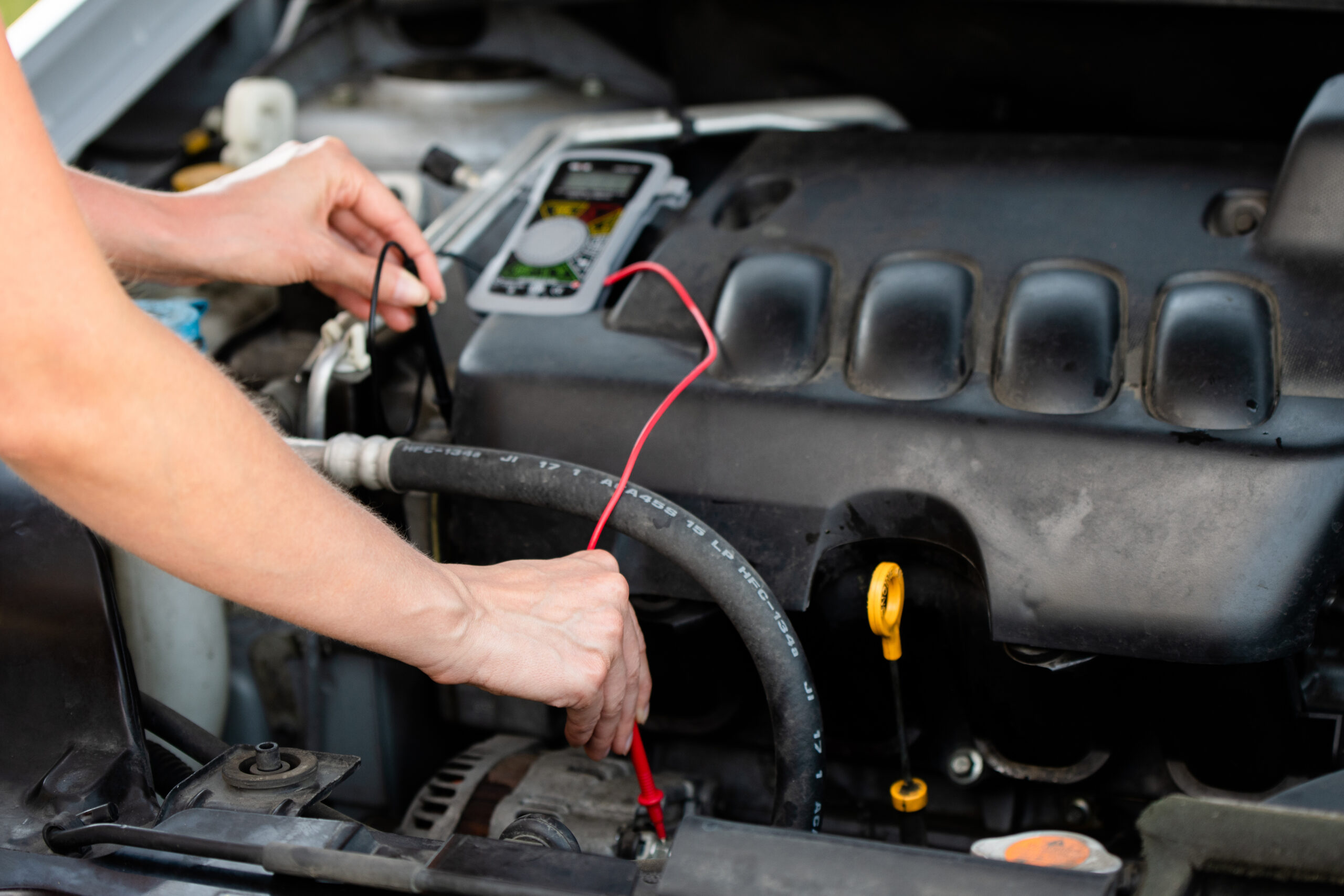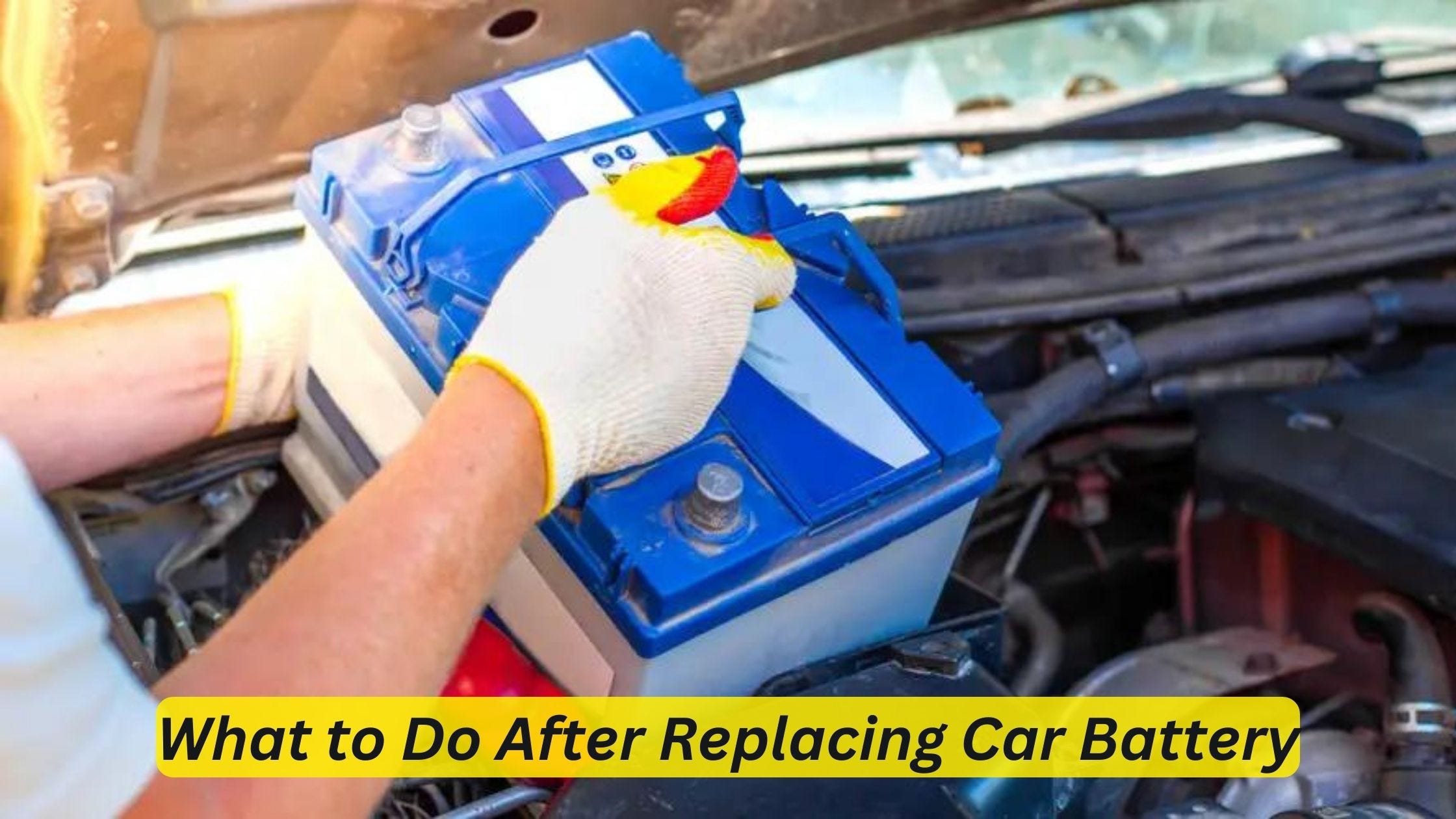What to Do After Replacing Car Battery. Start the engine to ensure the battery is functioning correctly. Check that the new battery is properly secured and connected.
Replacing a car battery might seem like the end of the maintenance process, but it’s just the beginning of ensuring your vehicle runs smoothly. This crucial step can breathe new life into your car, enhancing its performance and reliability. Yet, the task doesn’t end with the installation of a new battery.
It’s essential to follow up with specific actions to guarantee that your car benefits fully from this change. These steps, including system checks and electronics resetting, are not just about maintaining performance but also about safeguarding your vehicle’s longevity. Ensuring the battery is properly installed and that your car’s electronic systems are in sync post-replacement can save you from potential headaches down the road.

Credit: www.tiresplus.com
Introduction To Post-battery Replacement
Replacing your car battery marks the start of a new chapter for your vehicle’s electrical system. It’s like giving your car a fresh breath of life. But what do you do next? This guide walks you through the essential steps post-battery replacement to ensure everything runs smoothly.
Why It’s Crucial
Understanding the importance of post-installation checks can save you from future headaches. It’s not just about starting your car; it’s about maintaining the health and longevity of your new battery and electrical system. Let’s dive into what makes these steps so critical.
Immediate Steps
- Check the connections: Ensure they are tight and corrosion-free.
- Test the alternator: Confirm it charges the battery properly.
- Inspect for errors: Look at the dashboard for warning lights.
- Reset systems: Some cars require reprogramming after battery replacement.
Inspecting The Battery Installation
Replacing your car battery is a smart move for maintaining your vehicle’s reliability. But the job isn’t done with the new battery in place. Proper inspection ensures everything is secure and functioning well. Let’s walk through the key steps to check after a battery installation.
Checking Connections
Examine the terminals for a tight fit. Loose connections can lead to power issues. Ensure the clamps are snug on the battery posts. Look for any signs of corrosion and clean if necessary. A well-connected battery is critical for optimal performance.
Ensuring Proper Placement
Confirm the battery sits firmly in its tray. It should not move or vibrate when you drive. Secure the hold-down clamp or strap. This prevents damage from vibrations. A stable battery lasts longer and performs better.
- Check the battery’s position.
- Adjust if it’s misaligned.
- Tighten the hold-down hardware.
Performing these checks after a battery replacement will give you peace of mind. Your vehicle’s electrical system relies on a properly installed battery. Take the time to inspect and ensure a job well done.
Resetting The Vehicle’s Electrical System
After installing a new car battery, it’s crucial to reset the vehicle’s electrical system. This step ensures your car operates smoothly and recognizes the new battery. Let’s dive into the process and its importance.
Steps To Reset The Vehicle’s Electrical System
- Turn the ignition key on, but don’t start the car.
- Leave the key in this position for a minute to allow the system to recognize the new battery.
- Start the engine and let it idle for a few minutes.
- Turn on your headlights, which helps the electrical system calibrate.
- Check the dashboard for warning lights and ensure they go off.
- Turn off the car and restart it to confirm the reset is complete.
Why Resetting The Electrical System Matters
- It restores electronic memories for systems like the radio and windows.
- Ensures smooth communication between the battery and the car’s computer.
- Prevents unexpected issues related to power and performance.
- Avoids malfunctions in security systems and key fobs.
Reprogramming Electronic Devices
Reprogramming Electronic Devices is a crucial step after replacing your car battery. Modern vehicles rely on electronics for everything from unlocking doors to finding your destination. A new battery means these systems may need a reset. Let’s walk through the process.
Key Fobs And Radios
Key fobs and car radios often lose their settings after a battery change. Here’s how to get them back up:
- Key Fobs: Hold the lock and unlock buttons for a few seconds until the car responds. This syncs the fob.
- Car Radios: Enter the security code found in your vehicle manual. This unlocks the radio.
Clocks And Gps Systems
Resetting your clock and GPS ensures you stay on time and on track. Follow these steps:
- Clocks: Use the console buttons to set the correct time. Some cars update automatically with GPS signals.
- GPS Systems: Turn on the device and allow it to locate satellites. This recalibrates your position.
Remember to check your car’s manual for specific instructions. Each model may have different steps for reprogramming devices.
Checking The Alternator Health
Once a car battery is replaced, it’s crucial to check the alternator health. A healthy alternator ensures the battery charges properly while driving. Neglecting this step might lead to more car troubles. Let’s dive into why testing the alternator is important and learn how to perform this essential check.
Importance Of Alternator Testing
Testing the alternator is key to car maintenance. The alternator charges the battery and powers the electrical system. A faulty alternator can lead to a dead battery or cause damage to other components. Regular checks prevent unexpected breakdowns and costly repairs.
How To Test The Alternator
To test the alternator, follow these steps:
- Start the engine with the car in park.
- Turn on the headlights, radio, and air conditioning.
- Observe the brightness of the headlights.
If the headlights dim when the engine is revved, the alternator may be weak. Using a multimeter gives a more accurate reading:
- Set the multimeter to measure voltage.
- Connect the red lead to the positive battery terminal.
- Attach the black lead to the negative terminal.
A healthy alternator shows a voltage between 13.8 and 14.2 volts. Readings outside this range suggest alternator issues.
Regular alternator checks keep the car running smoothly. Ensure these checks are part of routine vehicle maintenance. Stay ahead of car issues and enjoy stress-free driving.

Credit: www.autozone.com
Driving Patterns Post-battery Change
Replacing your car battery can feel like giving your vehicle a fresh start. Yet, what comes after is crucial for ensuring everything runs smoothly. Your driving patterns post-battery change can impact the performance and longevity of your new battery. Let’s explore the essential steps to take during the initial drives and while observing performance.
Initial Drive
Right after installing a new battery, the initial drive is a key moment for your car. This first trip allows your vehicle’s computer system to recalibrate with the new battery. Follow these simple steps:
- Take a longer drive: Aim for at least 30 minutes to help the battery charge fully.
- Avoid short trips: Quick drives can prevent the battery from charging completely.
- Limit energy use: Keep the use of lights, radio, and air conditioning to a minimum on this first drive.
Observing Performance
After the initial drive, keep an eye on how your car behaves. This is a checklist to help you monitor your vehicle’s performance:
| Check Point | What to Observe |
|---|---|
| Start-up | Ensure the engine starts smoothly without delays. |
| Electrical Components | Check lights, wipers, and dashboard indicators. |
| Driving Experience | Notice any unusual noises or vibrations. |
Remember to report any issues to your mechanic promptly. Regular check-ups help keep your car in top condition.
Maintenance Tips For Extended Battery Life
Getting a new car battery is a fresh start for your vehicle. To keep it running smoothly, follow these maintenance tips. They will help your battery last longer.
Regular Checks
Checking your car battery often is key. Here’s what to do:
- Look at the battery terminals. Make sure they are clean and tight.
- Check the battery case. It should not have cracks or leaks.
- Test the battery charge. Use a car battery tester. This tells you if it needs a charge.
Doing these checks can stop big problems before they start.
Avoiding Common Mistakes
Some mistakes can shorten your battery’s life. Here are tips to avoid them:
- Do not leave lights on. This can drain your battery fast.
- Keep the battery tight. A loose battery can get damaged.
- Avoid short trips. They prevent the battery from fully charging.
Following these tips helps your battery last longer.

Credit: medium.com
Frequently Asked Questions
Do I Need To Do Anything After Installing A New Battery?
After installing a new battery, check the connections, ensure they’re tight and corrosion-free. Start your vehicle to test the battery and drive regularly to maintain its charge. Monitor the battery’s performance over the next few days to confirm proper installation.
Should I Let My Car Run After Installing A New Battery?
No, it’s not necessary to let your car run after installing a new battery. Simply start the engine to ensure the installation is successful. Regular use will charge the battery adequately.
How Long Do You Have To Wait To Drive After Replacing A Car Battery?
You can drive immediately after replacing a car battery. No waiting time is necessary. Ensure the new battery is securely installed and connected properly before starting your vehicle.
Do You Have To Reset Anything After Changing A Car Battery?
After changing a car battery, you don’t typically need to reset anything. However, some vehicles may require a radio code or relearning idle speed.
Conclusion
Replacing your car battery is a crucial step in ensuring your vehicle’s reliability. Remember to check the connections regularly and keep an eye on the battery’s performance. Stick to a maintenance routine to prolong its life. Drive with confidence, knowing your car is powered properly for the journeys ahead.
